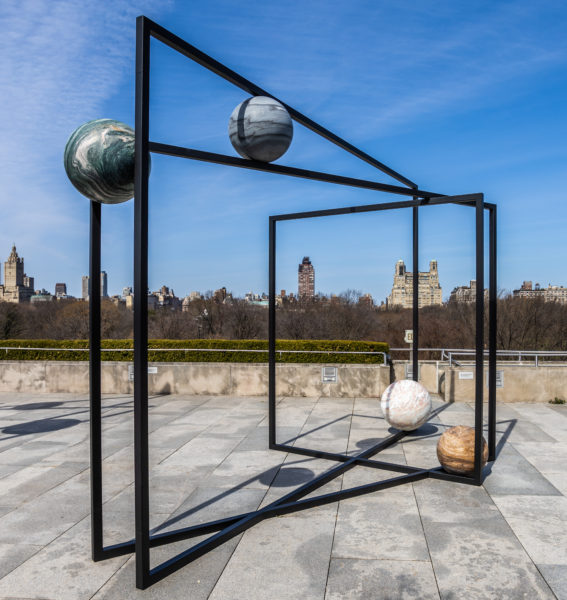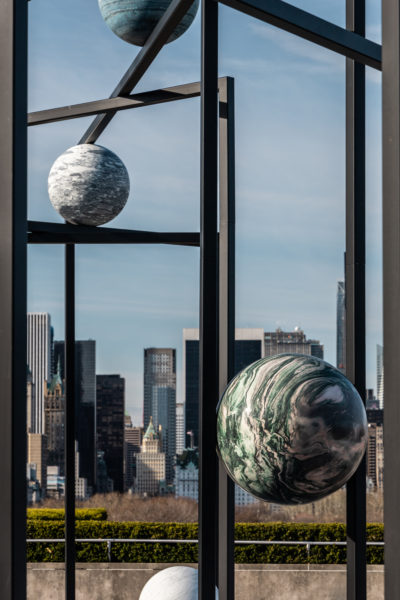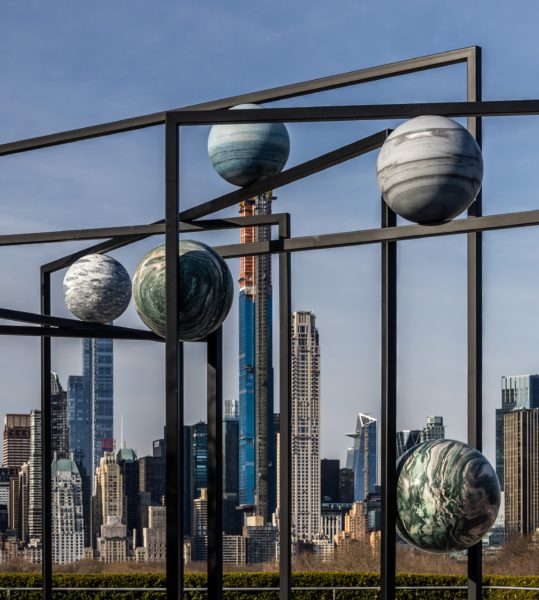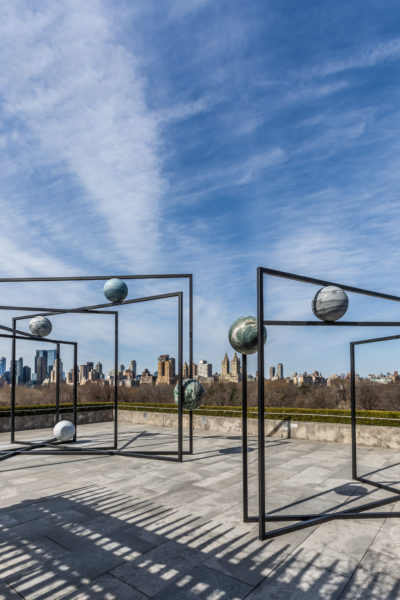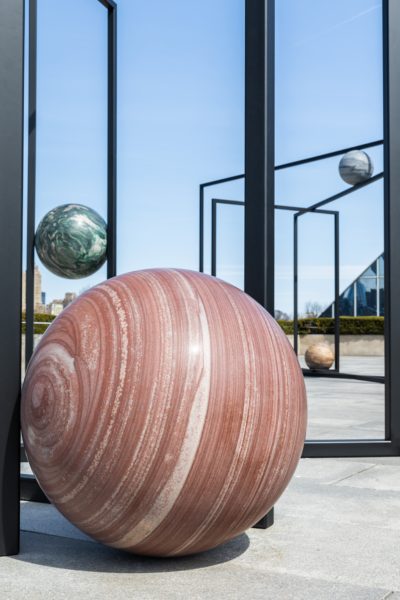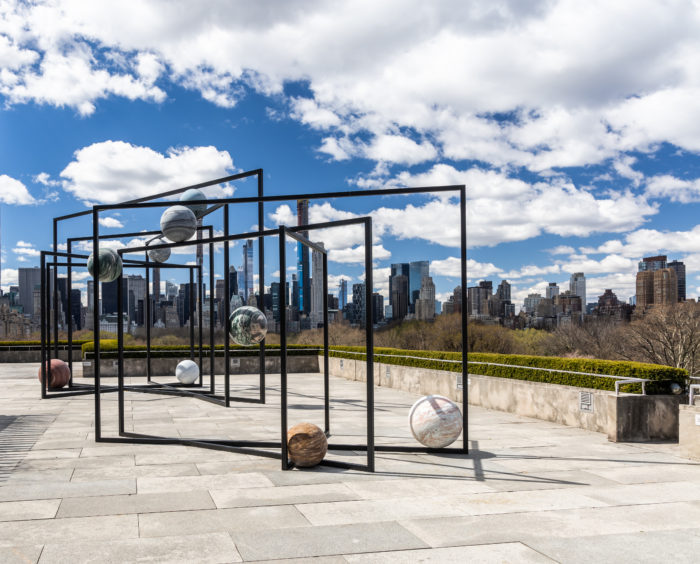
Born in Poland in 1979, Alicja Kwade’s family moved to West Germany in 1987, where she studied art in Berlin; she continues to live there now. Her roof garden commission at the Metroplitan Museum, entitled ParaPivot (2019), establishes her general interest in formal abstraction and the suggestion of systems–in the case of ParaPivot, the particular example of solar systems. Working almost entirely within an abstract idiom, Kwade nevertheless manages to suggest the presence of both the stars and the earth, using stone spheres to indicate planets, raw stones and, sometimes, wood to suggest the presence of the natural world. These materials manage to soften the severe nonobjective slant of her art. In the rooftop double work, Kwade demonstrates her gift for an abstraction that may have begun with minimalism but evolves into something more open, more in keeping with her ongoing interest in structures that can stand as evidence of something larger than ourselves.

The two works on the roof are simple to describe: open steel rectangles, intersecting at different angles, on the top and bottom of which have been placed stone spheres, moderate to large in size, of various colors, and with a streaked surface. The sky and Central Park dominate the surroundings, although the night I visited the roof garden, the number of people drinking and enjoying the evening turned the open space into a populist site, rather than one evidently surrounded by nature. Given the precision of the steel beams constructing the open frames, and the organic forms of the spheres, viewers might see ParaPivot I and II as an amalgam of idioms; the balance occurring between the two kinds of abstractions shows how very different, even opposing, kinds of shapes can be made to cohere in work that demonstrates regard for both nonobjective and observable phenomena. Additionally, the sight of skyscrapers on all sides of the garden, in particular, the south, offers a contrast in their dense particularity to the simple, open-ended structures of Kwade’s.

It may be that such work cements the idea that fine art has now become entirely international, that is, without reference to national art histories. Nothing in these two pieces is demonstrably Polish or German, so it is fair to say that Kwade is utilizing a language that began in painting with French modernism but here has shifted to a sculptural idiom spread worldwide. It is likely no longer possible for art to suggest the particular attributes of a country or region, outside of the major differences found in the West and Asia (but even there we are heading toward a merger of styles). The formal language ParaPivot presents belongs to a vernacular which is relatively recent but which establishes no geographical particularity. What does this mean? It means that just as our capitalist economies have been merged through technology, so has our visual culture been consolidated by time and formal histories into an increasingly narrow define. As good as Kwade is–and she is very, very good–she participates within the constraints that now pertain to contemporary abstract sculpture. Thus, her art can be called an argument for the persistence of a free-wheeling abstraction that lacks specific cultural attributes.

Recently, in the last 25 years, American art has been increasingly taken with political change. The origins of such work are usually the psychic circumstances of the minority artist making it. This is a consequence of the end of formal advance. Yet the language of abstraction proves useful, and esthetically compelling, in the hands of individuals if not in groups or movements. We are now in a position to recognize both the need for outsiders to move into the mainstream of art, no matter their background. But it is also necessary for artists to maintain ties to the past in a visual sense. The formal language we experience in Kwade’s two excellent pieces shows that their achievement results from an adherence to the very recent gains of minimalism. But its contemporaneity also derives from the suggestion of the planets, which are beyond the state of being remote in age–the earth is 4.5 billion years old. So there is a double history here: one very recent and the other old beyond cognizance. Maybe this is the best way to proceed–by referencing a very recent past and one stretching past the shadows of known time. It is probable that Kwade is not consciously building her work in this way, but ParaPivot suggests such a perception, nonetheless. In doing so, she finds the means to proceed from an archeology of knowing into work that pushes ahead.
Alicja Kwade: Parapivot at The MET, The Roof Garden Commission
April 6 – October 27, 2019.
Photographs courtesy of The Met Museum
